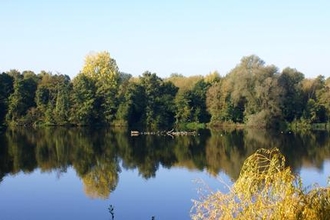What are Local Wildlife Sites?
From mystical ancient woodlands to quiet churchyards and bustling flower-rich roadsides; and from field-bordering hedgerows, to tiny copses, the UK enjoys special, often unnoticed wild places where nature thrives.
Whether they are in the depths of the countryside or nestled in busy towns and cities, these Local Wildlife Sites are exceptional areas of land.
They are identified and selected locally, by partnerships of local authorities, nature conservation charities, statutory agencies, ecologists and local nature experts, using robust, scientifically-determined criteria and detailed ecological surveys. Their selection is based on the most important, distinctive and threatened species and habitats within a national, regional and local context. This makes them some of our most valuable wildlife areas.
Local Wildlife Sites in Kent
Why do Local Wildlife Sites matter?

Who treasures and takes care of these places?
For more than 35 years, The Wildlife Trusts have worked with local authorities, statutory agencies, landowners and other local partners to establish effective systems for identifying, managing and monitoring Local Wildlife Sites. Within these partnerships, we often play a significant role in advising and supporting site owners. Local Wildlife Sites are often privately owned and so rely on the sheer commitment of the landowners, farmers and volunteers who are prepared to carry out sensitive habitat management. Without such care and effort, a site will gradually decline.
We have a series of habitat management advice sheets available for download at the end of this page.
Kent Wildlife Trust administrates the Richard Neame Local Wildlife Sites Award which is open to all Local Wildlife Site owners/managers to enter. The closing date for each year's entries is mid-October.
Photo by Joyce Pitt
Areas recognised for their wildlife value
Sites of Special Scientific Interest (SSSIs) protect the very best wildlife areas in the UK, and Special Protection Areas (SPAs) and Special Areas of Conservation (SACs) protect areas which are important on a European scale. However, these designations do not protect wildlife at a local level, and cannot ensure that the countryside as a whole is rich in wildlife.
Take a look at our map to view the boundaries and find out the names or reference numbers of Local Wildlife Sites, Roadside Nature Reserves, Nature Reserves, our Living Landscape areas and Kent's Biodiversity Opportunity Areas.
Information on Local Wildlife Sites in Kent and Medway

Photo by A Riggs
Local Wildlife Sites you can visit
Most Local Wildlife Sites are private and not accessible but a few are open to the public.
This story map highlights a few that can be visited and the wildlife you could see there.



